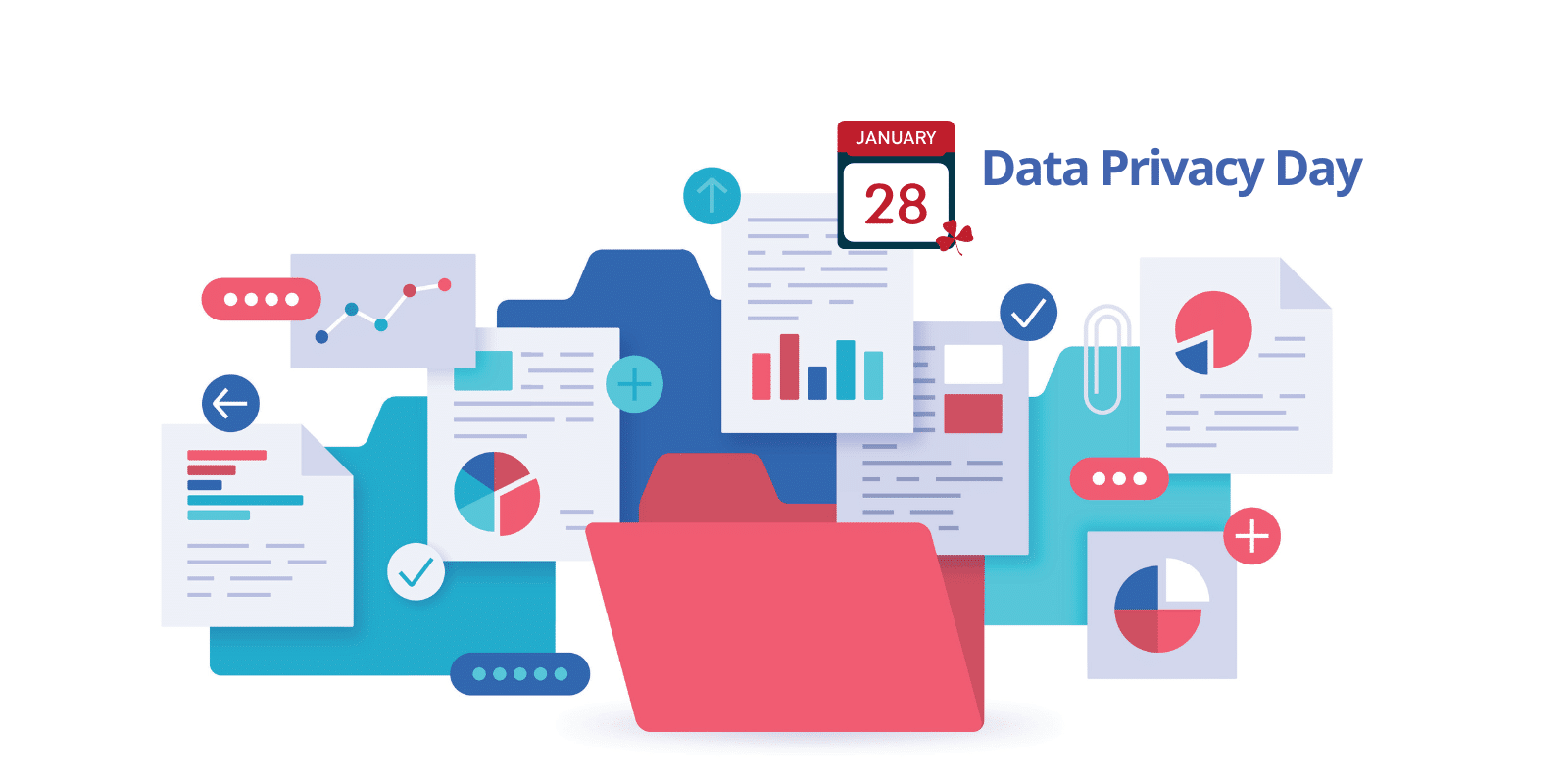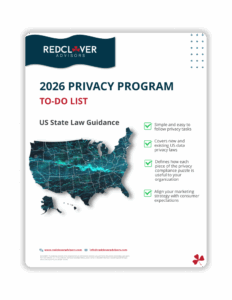Cupcakes? Check.
Balloons? Check.
Privacy notices delivered by singing telegrams? Check and check.
Yep, it’s Data Privacy Day over here, and we’re excited about it, as always.
But what if you’re not living and breathing privacy? Instead of a day of celebration and advocacy, it’s a day to read scary articles and put a couple of data privacy tasks on your to-do list.
And then, tomorrow, move on to other tasks.
That’s because, for some businesses, data privacy programs seem like a daunting, overwhelming thing. It can easily stay at the bottom of your to-do list for years while you focus on issues that seem more related to your core business operations.
Here’s the thing: A data privacy program is essential to your core business operations.
Data privacy programs are a way to protect your business, your employees, and your customers simultaneously. Notably, a data privacy program doesn’t have to be a behemoth program run by a 30-person IT department.
Instead, it should fit your business and your business needs.
So, let’s take this potentially overwhelming topic and break it down, one step at a time. How can you operationalize privacy at your business?
Understanding the why: privacy drivers for businesses
Why should a business adopt a privacy program at all? Well, there are a few different answers to that question.
Regulatory compliance
Currently, U.S. businesses are subject to a patchwork of state and international laws, from the EU’s General Data Protection Regulation to 20+ state-level laws. Compliance thresholds can vary, but one thing to say about the regulations is this: Non-compliance can be costly.
What’s more, ignorance is not absolution under the law. Even if you don’t know if a law applies to your business, you might still be liable for not meeting obligations.
Building customer trust—and a competitive advantage
Customer trust is key to standing out in a saturated online marketplace. With bigger, more crowded marketplaces, consumers are asking, “What business do I want to support?” based on differentiators like how well they protect personal information, communicate about data practices, and incorporate privacy into the customer experience.
Meeting consumer demands for data protection
Data privacy is not just a regulatory practice but a cultural norm. Americans value their privacy and expect businesses to respect their right to privacy.
If a business fails to protect its customers’ data, it may face a PR storm and regulatory violations.
Risk mitigation and data breach prevention
Data privacy is a critical contributor to data security and data breach prevention. It helps build in checks and balances to ensure sensitive information is protected via:
- Data access protocols
- Employee best practices
- Incident response plans
- Security reviews
Components of privacy operations
When we look at building a sustainable privacy program, we can break it down into four distinct stages:
1. Define: research and discovery of unique privacy requirements
You can’t plan for what you don’t understand. Some starter questions include:
- What privacy requirements apply to your business?
- What regulations apply to your market or markets you want to break into within the next few years?
- Have you collected data from residents of other countries, and does that make you liable to their privacy laws?
Once you know what privacy requirements apply, you can build a program that meets your needs and maintains compliance.
2. Design: creating a plan that aligns with business goals and constraints
Not every business has the resources to roll out a massive data privacy operation, and a small e-commerce company will have different concerns than a large law office.
Focus on building a plan that aligns with your needs.
For example, do you have limited resources? First, build a program that addresses your highest risks, then slowly expand it over time.
On the other hand, do you have expansive resources? You may have more options, but privacy programs may require gaining buy-in from a broader range of stakeholders or untangling a maze of past privacy practices.
3. Build: implementing technology, processes, and documentation
Processes and documentation will help you enshrine your program. Many businesses are required to have a formal data privacy policy.
Privacy software can automate or semi-automate certain tasks required by privacy laws, such as data subject requests, monitoring data access, and generating audit reports. Because it provides a real-time glimpse into your data program, it can help reduce human errors that could lead to breaches or regulatory fines.
4. Maintain: keeping the privacy program current and effective
Privacy programs are not a set-it-and-forget-it type of program. But with some planning, your privacy program review doesn’t have to be a dreaded task—it can be a simple, effective process to ensure your privacy protections are still functioning as intended.
This process should include ongoing monitoring of privacy controls and periodic effectiveness assessments. Additionally, set up checkpoints to review and update your privacy policies and procedures regularly. This approach ensures that your program stays responsive to changes in regulations, technology, and business practices.
2026 Privacy Checklist
Check out our Privacy Checklist for tips and practical guidance to establish a sustainable compliance program.

Key parts of privacy operations
As you work through the four stages of privacy operations, here are some action steps you can take to build a sustainable privacy program:
Establish privacy governance.
- Select individuals from different teams in your organization to form a privacy committee and review your program. This will help ensure your privacy program addresses various needs across your organization.
- Create a timeline to hold your business accountable as you roll out your privacy program.
- Establish a regular meeting schedule to keep the project moving and hold yourselves accountable.
- If you don’t have in-house counsel, consider hiring a third-party legal consultant to ensure your program complies with all regulations.
Complete a data inventory to understand how data travels in your organization.
- Create an assessment template.
- Execute and review the assessment.
- Look into how your third-party vendors may interact with data obtained by your company.
- Review data mapping software options to determine which is right for you (or ask a third-party expert for guidance).
- Train staff on how to use the data mapping software.
- Set up a regular data inventory to ensure you account for any operational changes.
Review your Privacy Impact Assessment (PIA) and Data Protection Impact Assessment (DPIA) requirements.
- Establish if your products or services fall under categories that require frequent PIAs, such as products designed specifically for minors.
- Determine if you operate in a state that requires annual or on-demand PIAs.
- Conduct a PIA and develop a plan for conducting future PIAs to ensure you understand the requirements and resources required.
Once you understand your current data processes, regulatory requirements, and goals, write your privacy policies.
- Establish procedures for data collection, storage, and processing.
- Incorporate cybersecurity controls like access levels and implementing multi-factor authentication for system logins.
Get your consent management procedures up to date.
- Review your customer consent practices. Do you:
- Have data that you no longer need?
- Collect data that you don’t have consent to collect?
- Have more data than you should?
- Update your consent program to make sure that it accurately reflects what data you collect.
- Draft or update your external privacy notice.
- Review your process for managing data subject access requests (DSARs).
- Consider adopting reputable software to semi-automate DSARs.
- Add cookie banners and “do not sell” links to your website, if appropriate or required.
Build your privacy program to last.
- Ensure your privacy program aligns with your organizational mission, vision, and values.
- Strive for continuous improvement. The data privacy world is changing, and an agile program built on industry best practices is your best tool for long-term success.
Train your employees.
- Use role-based training systems to empower employees and encourage a culture of data privacy.
- Create training exercises on real-life scenarios so employees get the best practice possible.
- Add some fun to your training. Think gamification, microlearning, speakers, sweepstakes, and personalized curriculum to keep employees engaged.
- Make training an ongoing initiative. Send out regular newsletters, incorporate privacy into team communications, and in general avoid lumping privacy into a three-hour long annual session.
Keep learning.
- Follow experts on social media.
- Read articles when you can.
- Listen to podcasts.
Ready to step up your privacy game?
Data privacy programs are just good business. They protect your business and your customers, boost customer trust, and can play a major role in growing your business’s future profits.
Ready to learn more? Contact us today.


